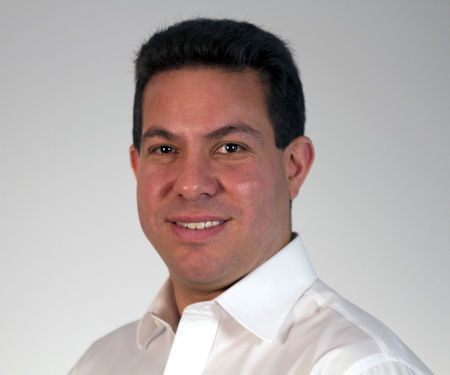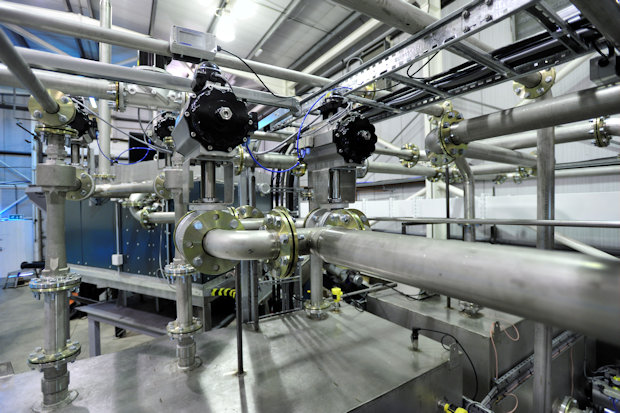With major changes coming to the UK’s extended producer responsibility legislation along with the Treasury’s plastic packaging tax, processes to recycle more plastics are gathering pace.
It is against this background that plastics recycling expert, Jeremy Blake has been appointed by Enval as part of its senior management team, in charge of operations and accelerating the business’ growth.

Plastics recycling specialist Jeremy Blake has joined Enval
Mr Blake brings with him over 10 years’ experience in the circular economy sector and prior to joining Enval, he was the head of recycling assets at Viridor.
From Enval, the company’s founder and CEO, Carlos Ludlow-Palafox, commented: “Treating plastic better enables the recycling of valuable resources and paves the way for environmentally responsible packaging solutions. With Jeremy’s extensive track record in the industry, we can further empower FMCGs to strengthen profitable and sustainable brands while complying with new regulations and open up new revenue streams for waste handlers.”
Speaking to letsrecycle.com, Mr Blake said that the fundamental story, in terms of his move are that he had been “in mechanical recycling for quite a long time, pushing as much as we possibly can through making high quality polymers and getting into big ongoing contracts to make it as circular as possible. But in the background of all of that, about six years ago, I had started looking at what are classed as chemical recycling technologies.”
Middle
He explains: “There is a frustrating gap in the middle between what is being mechanically recycled and stuff that is going to landfill or energy recovery – there’s a range of products in the market in the middle, which are too good to incinerate and recover energy from but they’re not quite good enough to mechanically recycle.”
The key point, he explained, is that there is still a reason for FMCGs to have these lightweight products and that is the carbon issue about extremely long shelf life and low packaging weights.

Enval CEO Carlos Ludlow-Palafox who pioneered the company’s pyrolysis work
Explaining this more, Mr Blake notes that for manufacturers and retailers with the plastic packaging tax coming in, they will have to use 30% recycled content or face a tax bill.
What is happening, he says, is that producers are rethinking their packaging. “If the packaging weighs 100g then you need 30g going into this, so the brands have looked at this. They have basically realised that if they make their packaging with a weight of 10g rather than 100g then they only need 3g of recycled content in it. So that is great from their point of view, it solves the pending problem of a huge taxation bill.”
Such a move by producers, he says, will be “a huge knock on consequence as most of the MRFs and plastics recycling facilities in the UK and beyond are geared up for a certain volume of rigid plastics and you can only lightweight these to an extent. So, if you have flexible plastics there’s going to be a massive increase in the amount of things like refill pouches, laminated pouches all the things that try to keep the same quality.”
Consequently, he suggests that the volume of rigid plastics will go down and these lighterweight plastic packaging items are going to go up which is “a little bit of the law of unintended consequences coming in with the EPR legislation.”
Pyrolysis
This is where Enval and its technology, pyrolysis, comes into play within the ‘chemical recycling’ name applied to solutions for these types of materials.
Mr Blake concedes that bringing the pyrolysis product to market had had its challenges. “Enval have a process which has been working commercially for some time but like most technology companies that are trying to get off the ground, they have had intermittent funding issues. You work through all of those to keep progressing and now they are at a key point where they have the process and the technology working.”
One advantage of the Enval approach is its relatively small size, he says. “A lot of pyrolysis technologies work, but unfortunately most of them rely on a very high volume of material because of the way the process operates but because of the microwave pyrolysis that Enval uses, it actually works on a relatively small scale.”

The plant can have just the footprint of two shipping containers – pictured the Alconbury facility
This is advantageous, Mr Blake explains, because it means that the plant can be modular with each module able to process about 2,500 tonnes a year. The plant also has “a very small footprint relative to others and because of this, those small it can be just replicated to meet the size of the feedstock, so if there is only 2,500 tonnes, one unit and if more they can be multiplied up to meet requirements.”
He explains that the one area which makes Enval’s process different to other pyrolysis approaches is that originally the company worked to deal with aluminium laminates. “There are a lot of aluminium laminated plastics in the market and they are problematic, whereas Enval’s process doesn’t need aluminium laminates to work but if aluminium laminates go in it, like cat food pouches and other very thin flexibles, not only does the process recover the polymer chemicals but it also recovers the aluminium at very good quality. The aluminium is not burnt off, it is cleaned through the pyrolysis process and then it’s extracted for turning into aluminium ingots.”
Gases and oils
Apart from the aluminium, the process can tolerate some contaminants such as organics, but also produces two other principle components. One is light gases, light carbon compounds which come off and are used to power a CHP engine, so that the process once started can provide its own power. The second component is heavier oils with higher molecular weights, they condense and are filtered into pyrolysis oil which are ultimately to go back into the remanufacture of polymers.
Now there is a difference between virgin polymers and polymers derived from a recycled source
Mr Blake explains the landscape around the Enval process – the company currently has its plant running multiple shifts at Alconbury, Cambridgeshire. He says: “The commercial scale plant we have running at the moment is at Alconbury, it runs multiple shifts and runs as an economic plant. The difficulty has been with the market in which it sits which has been a rocky road. The drivers from the petrochemical companies to use the oil in manufacturing new plastics, that approach has only been around in the real sense for the last couple of years.
“The landscape that we are in at the moment with a circular economy and the plastics packaging tax have effectively lined up all the last few ducks that were needed to make this work. Now there is a difference between virgin polymers and polymers derived from a recycled source, and those legislative changes are in consultation or being acted upon because they are about to become law, certainly across Europe.”
Mr Blake sees that brand owners and manufacturers are starting to use this material and that this is an inevitability.
Feedstock
So there will be more material available for the Enval process. He explains that feedstock input is a bit of a blended approach. “We will allow licensing for certain brands with high volumes of pouches to allow them to be directly posted to us – those materials come in every day and more coming in. In addition there is also a multi-site approach. One of the real benefits of the Enval solution is that the solution can move to the waste, rather than having to move a thousand tonnes of plastic pouches –which don’t travel very well on the roads because they are so light. This can be for sites which produce a lot of material, such as post industrial waste from other recycling processes or might be post-consumer out of MRFs in the future.”

A mix of feedstock routes are likely for the Enval plants
And, the plant has taken in waste material generated after drinks cartons, such as Tetrapaks, have already been processed for fibre reclamation.
In terms of size of the pyrolysis plant, Mr Blake says at its smallest scale it has the footprint of two shipping containers although with some adds this would be slightly larger. “But we can put in a simple solution which can do exactly what it says on the tin in two shipping containers.”
Feedstock
Looking ahead, he indicates that conversations are underway with a range of partners to develop use of the process. And, the feedstock range can be “quite diverse. We can add preprocessing parts on the front to open the input specifications even wider although it already opens a lot of doors.”
Clearly as the legislation developments and manufacturers look to lightweighting, the pyrolysis route offered by Enval offers a solution to a challenging product. With his experience in the sector, Mr Blake is well-placed to develop the company’s role as legislation to deliver a more circular economy takes shape.
The post Enval aiming to capture ‘mid-range plastics’ appeared first on letsrecycle.com.